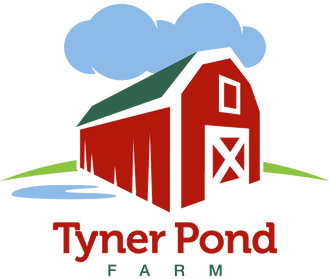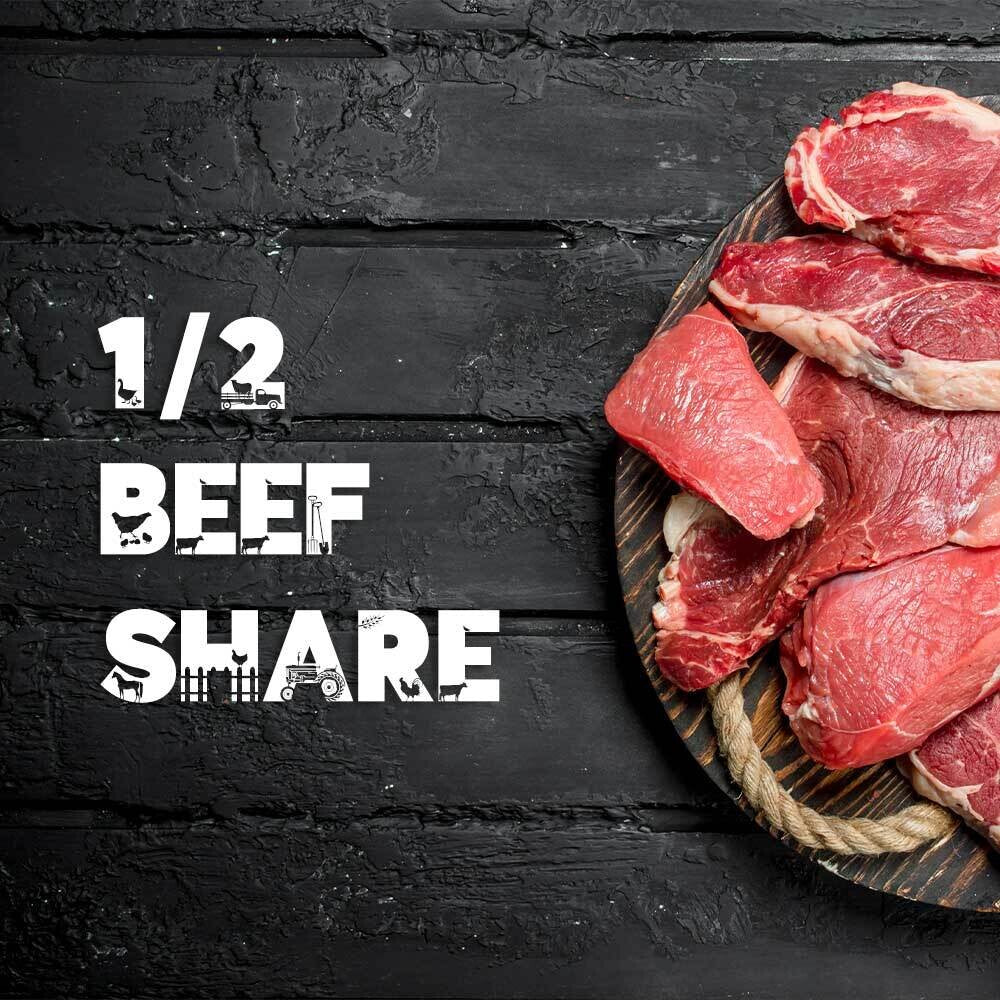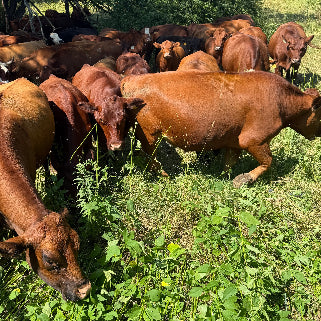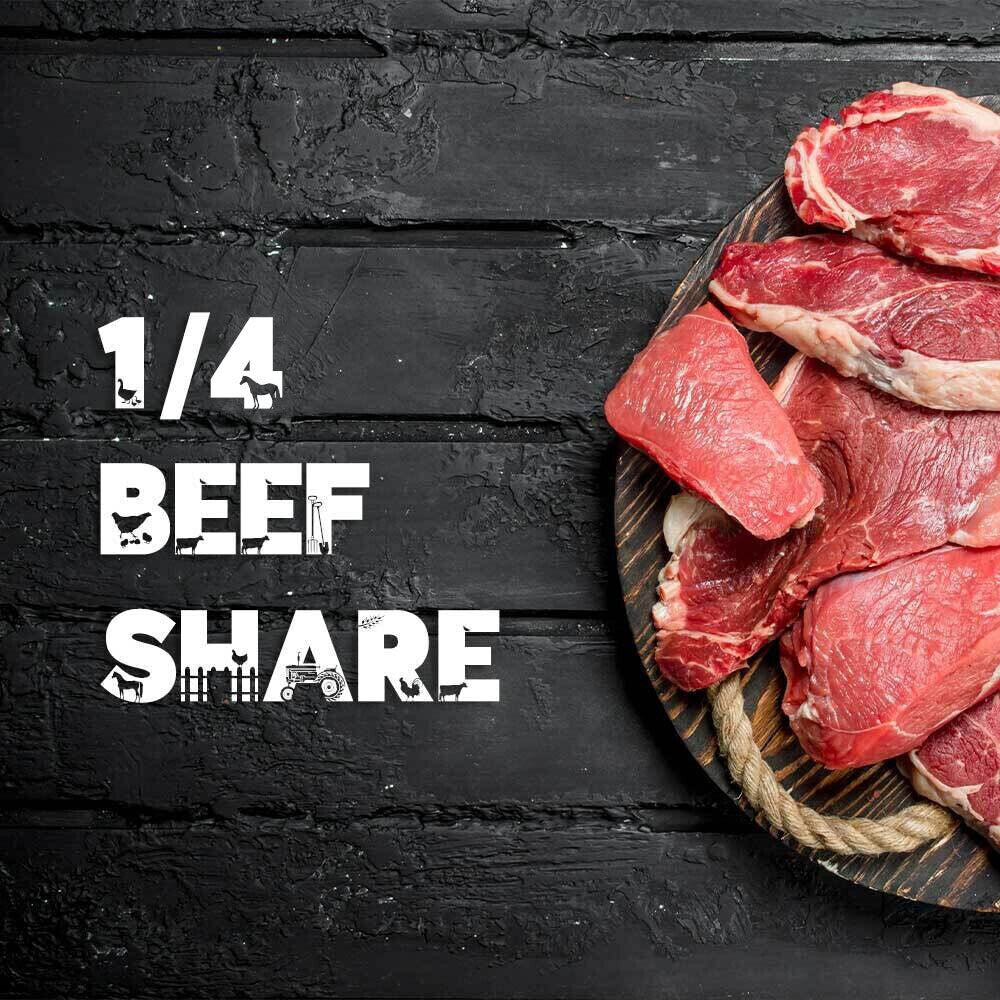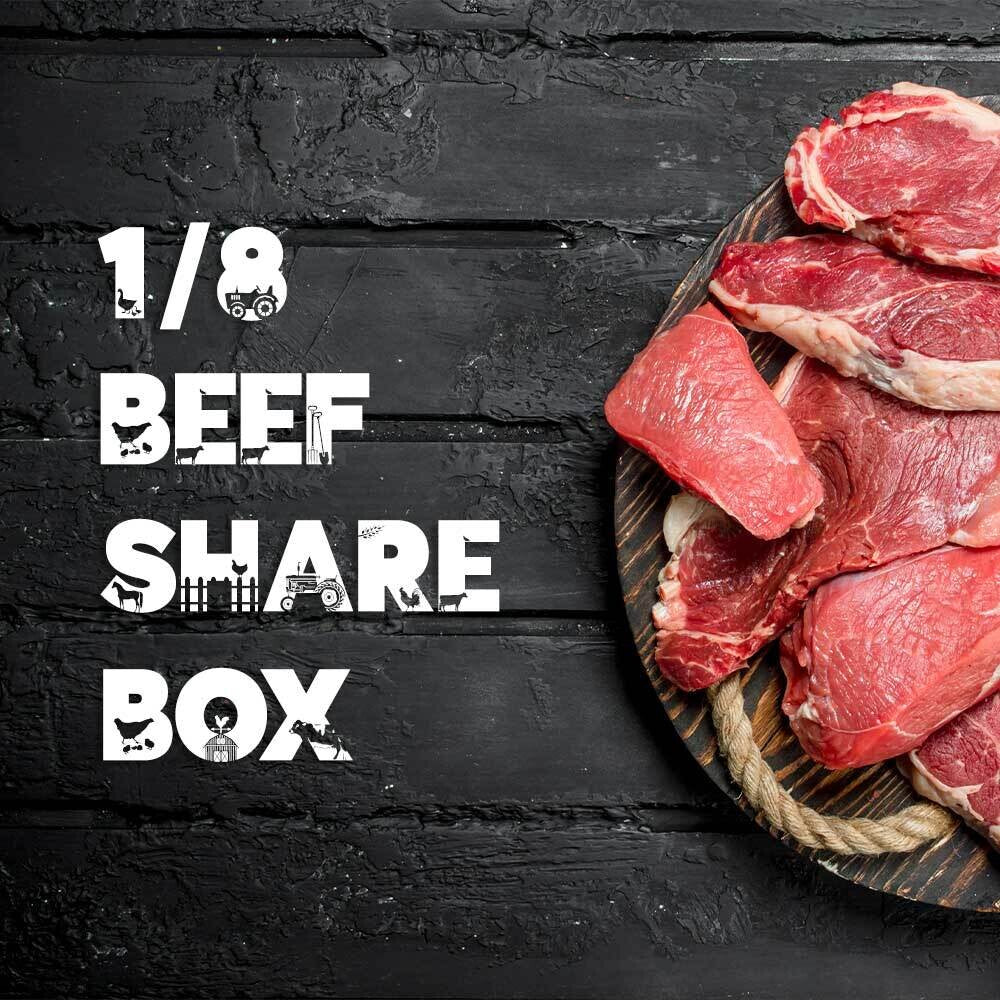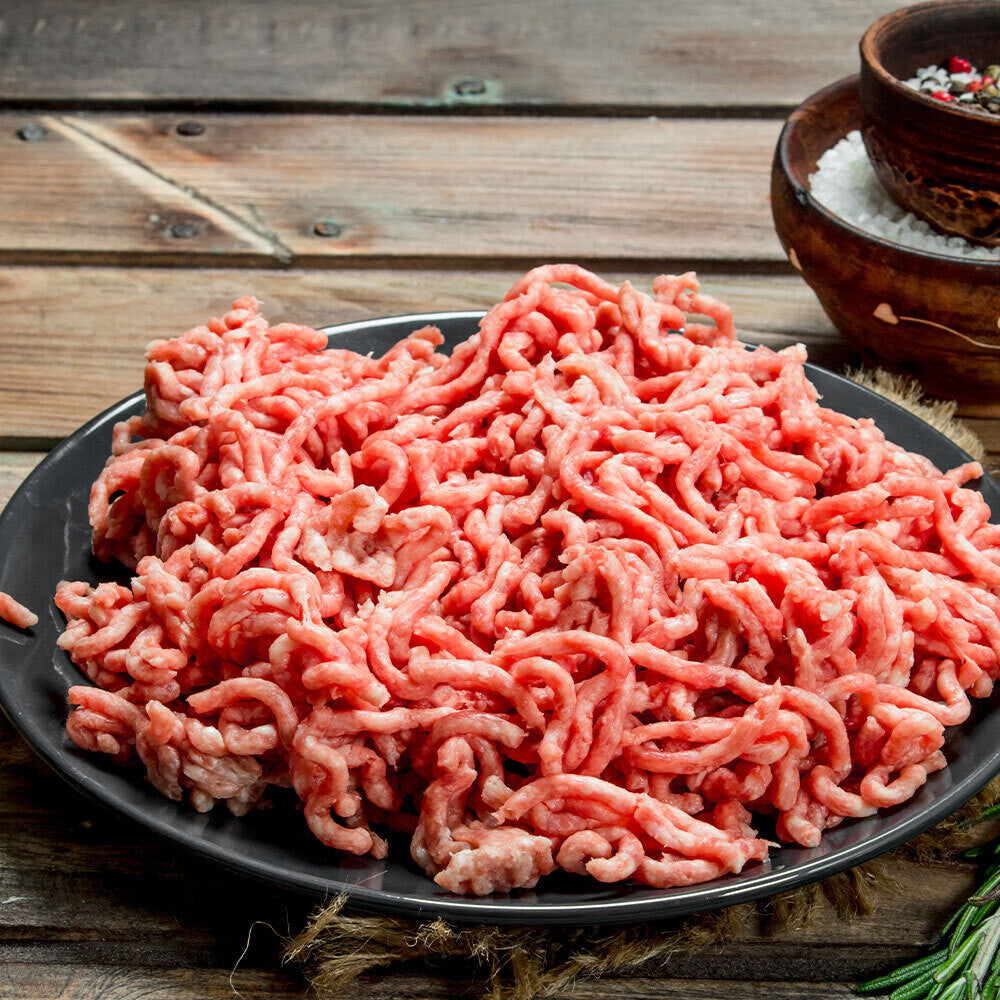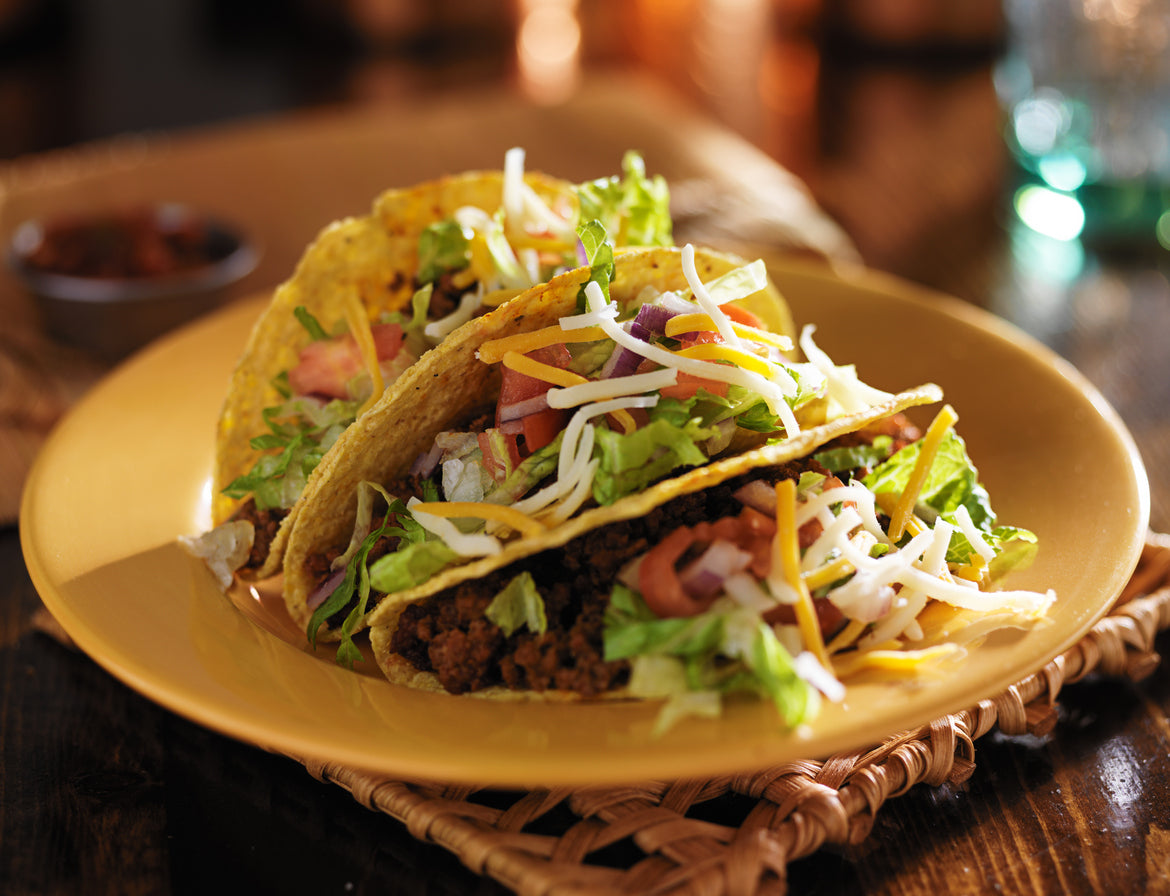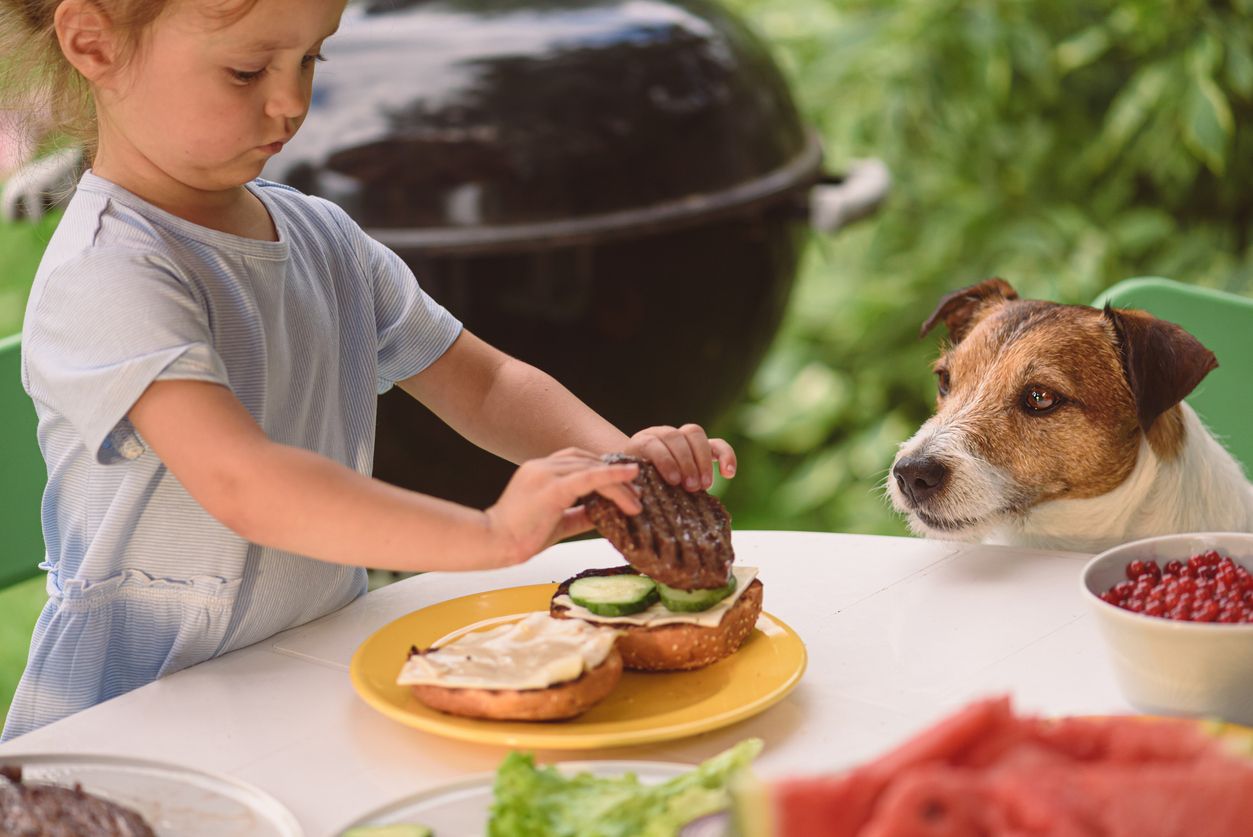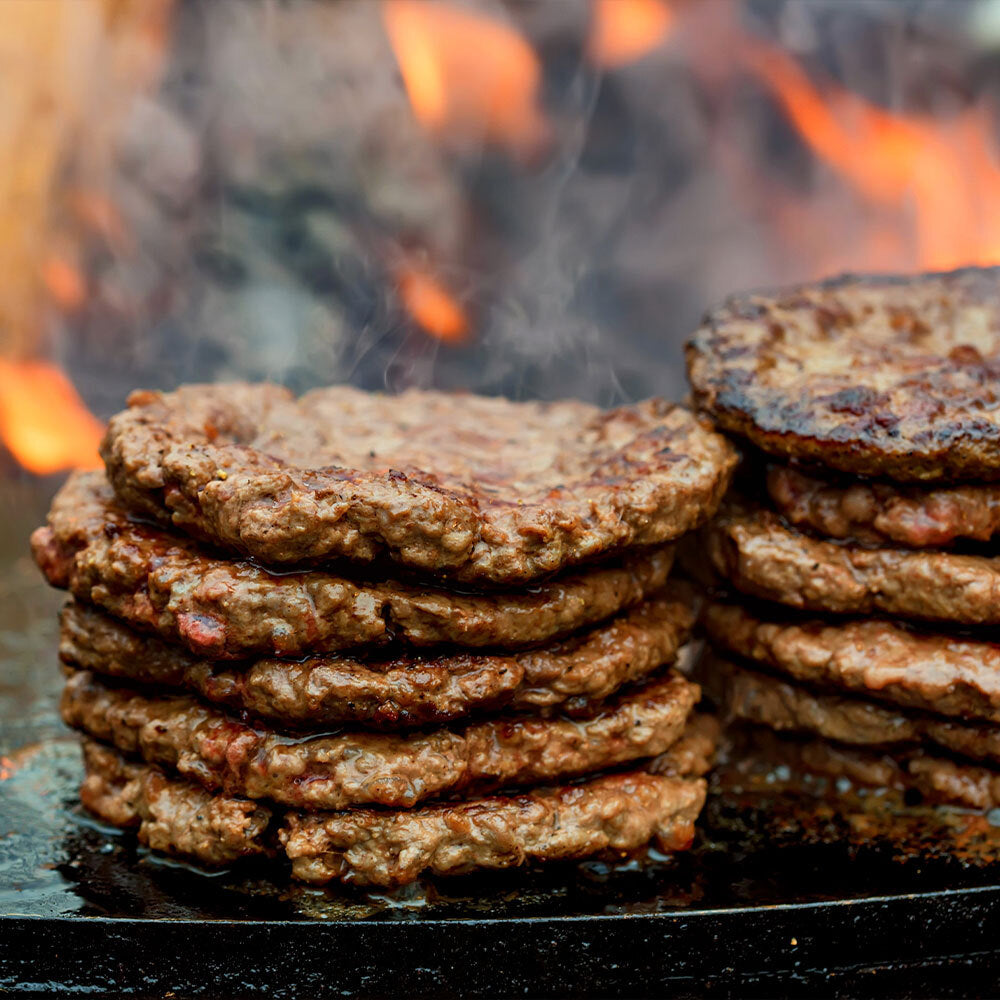
Elevate Your Steak Game with a Show-Stopping Tomahawk Steak
We are super exited to announce our newest product: Tyner Pond Farm Grassfed Tomahawk Steaks!
A Tomahawk Steak, also known as a cowboy steak or a bone-in ribeye steak, is a large, thick-cut steak that is named for its distinctive shape that resembles a tomahawk axe.
 Chloe modeling Tyner Pond Farm Tomahawk Steaks
The tomahawk steak is cut from the rib section of the beef, and it includes a long bone that is left attached to the meat. The bone is trimmed, leaving a clean, extended bone that can be used as a handle for serving the steak. This impressive cut of beef is usually 2 to 3 inches thick and can weigh up to several pounds, making it a popular choice for sharing or for special occasions.
Tomahawk steaks are known for their rich, beefy flavor and tenderness, and they are usually cooked using high-heat methods such as grilling or broiling. The steak's high fat content adds to its flavor and juiciness, and it is often served with simple accompaniments such as roasted vegetables or potatoes to allow the steak to be the star of the meal.Juicy, Flavorful, and Tender:
Chloe modeling Tyner Pond Farm Tomahawk Steaks
The tomahawk steak is cut from the rib section of the beef, and it includes a long bone that is left attached to the meat. The bone is trimmed, leaving a clean, extended bone that can be used as a handle for serving the steak. This impressive cut of beef is usually 2 to 3 inches thick and can weigh up to several pounds, making it a popular choice for sharing or for special occasions.
Tomahawk steaks are known for their rich, beefy flavor and tenderness, and they are usually cooked using high-heat methods such as grilling or broiling. The steak's high fat content adds to its flavor and juiciness, and it is often served with simple accompaniments such as roasted vegetables or potatoes to allow the steak to be the star of the meal.Juicy, Flavorful, and Tender:
 Chloe modeling Tyner Pond Farm Tomahawk Steaks
The tomahawk steak is cut from the rib section of the beef, and it includes a long bone that is left attached to the meat. The bone is trimmed, leaving a clean, extended bone that can be used as a handle for serving the steak. This impressive cut of beef is usually 2 to 3 inches thick and can weigh up to several pounds, making it a popular choice for sharing or for special occasions.
Tomahawk steaks are known for their rich, beefy flavor and tenderness, and they are usually cooked using high-heat methods such as grilling or broiling. The steak's high fat content adds to its flavor and juiciness, and it is often served with simple accompaniments such as roasted vegetables or potatoes to allow the steak to be the star of the meal.Juicy, Flavorful, and Tender:
Chloe modeling Tyner Pond Farm Tomahawk Steaks
The tomahawk steak is cut from the rib section of the beef, and it includes a long bone that is left attached to the meat. The bone is trimmed, leaving a clean, extended bone that can be used as a handle for serving the steak. This impressive cut of beef is usually 2 to 3 inches thick and can weigh up to several pounds, making it a popular choice for sharing or for special occasions.
Tomahawk steaks are known for their rich, beefy flavor and tenderness, and they are usually cooked using high-heat methods such as grilling or broiling. The steak's high fat content adds to its flavor and juiciness, and it is often served with simple accompaniments such as roasted vegetables or potatoes to allow the steak to be the star of the meal.Juicy, Flavorful, and Tender:
How to Cook a Tomahawk Steak Like a Pro
Adding a dry brine step before cooking can help to enhance the flavor and tenderness of the tomahawk steak. Here's how to do it:- Pat the tomahawk steak dry with paper towels and place it on a wire rack over a baking sheet.
- Sprinkle the steak generously with kosher salt or your favorite steak seasoning blend, making sure to coat all sides of the steak.
- Place the steak in the refrigerator and let it dry brine for at least 1 hour, or up to 24 hours for maximum flavor and tenderness.
- Remove the steak from the refrigerator and let it come to room temperature for about 30 minutes before cooking.
- Preheat your grill or oven to high heat.
- Season the steak with additional salt and pepper or your favorite steak seasoning blend, if desired.
- If using a grill, place the steak on the hottest part of the grill, directly over the flames. If using an oven, place the steak on a preheated cast-iron skillet or a roasting pan.
- Sear the steak on both sides for 2-3 minutes until a nice crust forms.
- Move the steak to a cooler part of the grill or reduce the oven temperature to 350-375°F and cook the steak to the desired level of doneness. This will take about 10-15 minutes for medium-rare, depending on the thickness of the steak.
- Remove the steak from the heat and let it rest for about 5-10 minutes before slicing and serving. This will allow the juices to redistribute and keep the steak moist and tender.
- Slice the steak against the grain and serve with your favorite side dishes.
- Flavor: Grass-fed beef tends to have a more complex, robust flavor compared to grain-fed beef. The grasses, plants, and other forage that grass-fed cattle eat can impart unique flavors to the meat, making it taste more rich and beefy. In contrast, grain-fed cattle typically consume a diet of mostly corn and other grains, which can result in a less pronounced flavor profile.
- Nutritional profile: Grass-fed beef is often considered more nutritious than grain-fed beef. Grass-fed beef tends to be leaner and contain more healthy omega-3 fatty acids, conjugated linoleic acid (CLA), and antioxidants. Grain-fed beef, on the other hand, tends to be higher in unhealthy saturated fat and lower in these beneficial nutrients.
- Animal welfare: Grass-fed beef is often considered more humane and sustainable than grain-fed beef. Grass-fed cattle are typically raised on pasture and allowed to graze and move around freely, which is thought to be more natural and comfortable for the animals. In contrast, grain-fed cattle are often confined to feedlots and fed a diet that is not necessarily natural to their digestive system.
Tags:
Previous post
Using Less Popular Cuts of Grassfed Beef to Save Money and Elevate Your Cooking Game
Next post
